Inspection
After hot-dip galvanizing, the finished steel product is inspected to ensure compliance with applicable specifications. The inspection process requires a clear understanding of specification requirements and compliance measurement techniques to make an accurate assessment. While coating thickness is often the most closely scrutinized, there are other key requirements including adherence, finish, and appearance.
In Plant Inspection
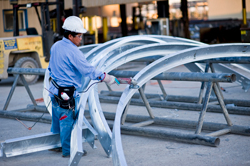
The touch-up and repair of hot-dip galvanized steel coatings is important to maintain uniform barrier and cathodic protection as well as ensure longevity. Although the hot-dip galvanized coating is very resistant to damage, small voids or defects in the coating can occur due to improper handling of the steel after galvanizing or from normal wear and tear.
ASTM provides inspection requirements for coating thickness, adherence, finish, and appearance. Tests and acceptance criteria are outlined for methods involving magnetic thickness gauges, the stout knife test, and for visual inspections.
Magnetic Gauge
Sampling requirements are provided in the specs. At least five widely dispersed measurements per specimen. Average should not be less than one thickness grade lower than material category
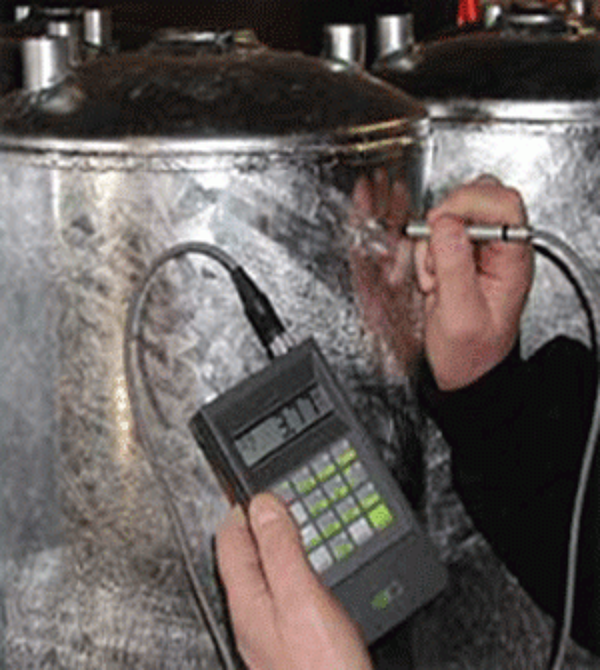
Electronic Gauges
Electronic Gauges are the most accurate, and arguably, the easiest thickness gauge to operate. The electronic thickness gauge is operated by simply placing the magnetic probe onto the coated surface and then a digital readout displays the coating thickness. Electronic gauges have the advantage of not requiring recalibration with probe orientation, but do require calibration with shims of different thicknesses in order to verify the accuracy of the gauge at the time it is being used. These shims are measured and the gauge is calibrated according to the thickness of the shim, and then this process is repeated for shims of different thicknesses until the gauge is producing an accurate reading in all ranges of thickness. One benefit of the electronic or digital gauge is the ability to store data and perform averaging calculations which facilitates the whole process.
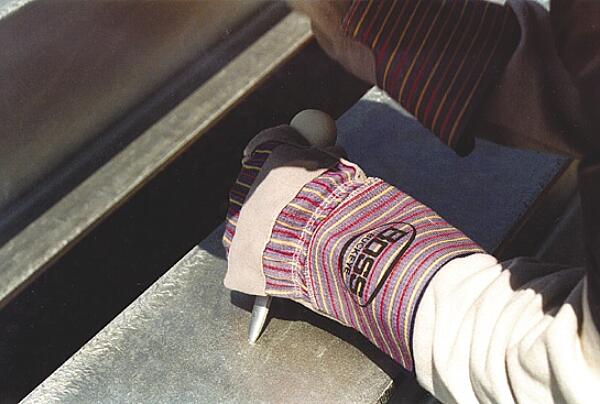
Stout Knife Test
HDG coating is metallurgically bonded to the steel at 3,600 psi. Do not perform this test on edges or corners. Run the point of the knife along the surface smoothly without gouging or whittling. In order to have a proper test, the coating must not flake.
Field Inspection
Inspection of hot-dip galvanized steel products does not end once they are accepted at the galvanizer's facility or job site. Once erected, any good corrosion protection strategy includes periodic inspection and maintenance to ensure the protective coating is performing as expected. When inspecting hot-dip galvanized steel in the field, the inspector should be aware of potential accelerated corrosion areas and aesthetic surface defects.
When inspecting a galvanized coating in the field, the number one concern is the number of years remaining before the coating will need to be touched-up or replaced. Fortunately, estimating the remaining time to first maintenance for hot-dip galvanized coatings in atmospheric exposures is relatively simple. For a ballpark estimation, use a magnetic thickness gauge to take a coating thickness measurement and check the thickness value against the AGA's Time to First Maintenance Chart.
In addition to taking coating thickness measurements, the galvanized coating can be visually inspected for signs of accelerated corrosion in specific areas. Thickness measurements should be taken in these areas to ensure adequate zinc coating remains or if touch-up should be performed. Corrosion-prone areas to inspect further include:
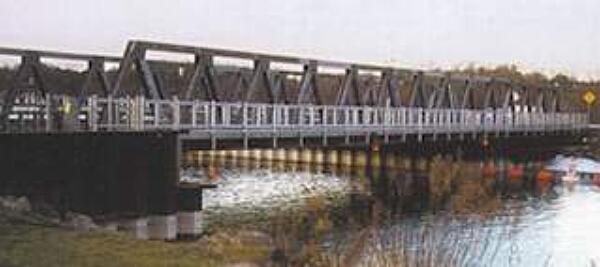
Crevices
When corrosive elements such as water penetrate crevices, the limited air flow can create differences in potential creating anodic and cathodic areas which can lead to corrosion. Some common areas include: overlapped areas, mated sections between fasteners, and areas where the galvanized coating is butted up against another surface such as wood, concrete, or asphalt. When possible, crevices should be avoided during the design process.
Dissimilar Metals in Contact
When dissimilar metals are in contact, galvanic corrosion can occur. Zinc, which comprises the galvanized coating, is high on the Galvanic Series of Metals; and therefore, will preferentially corrode to almost any other metal with which it is in contact. When possible, preventing dissimilar metals from being in contact should be addressed during the design process. Electrically isolating dissimilar metals from one another stops galvanic corrosion and can be accomplished by using plastic or rubber grommets between the dissimilar metals or by painting the cathode. When the surface area of the cathode is much larger than the anode, galvanic corrosion can quickly consume the anodic material.
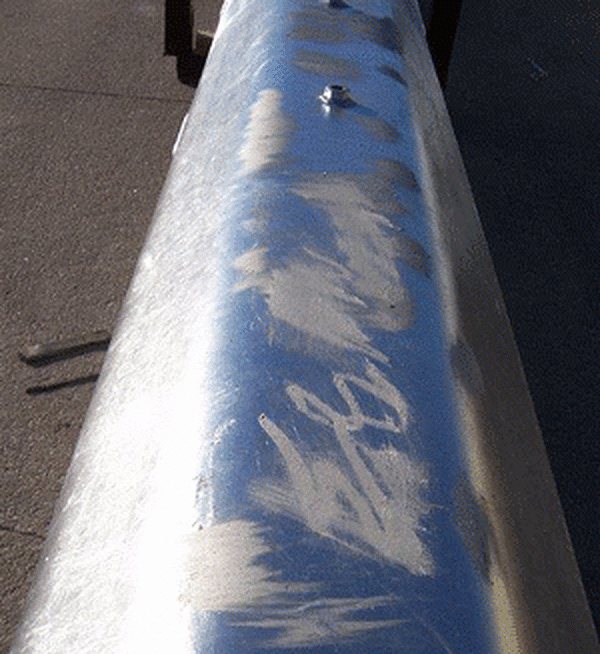
Previously Touched-Up Areas
Areas of hot-dip galvanized steel previously touched-up either after the initial coating or erection often corrode more quickly than the surrounding zinc coating and should be inspected visually and tested with a magnetic thickness gauge.
Areas Where Water Pools
Flat areas can collect water and other corrosive elements and can have higher corrosion rates than vertical surfaces. Visually observing galvanized steel's flat areas and taking coating thickness measurements will ensure adequate corrosion protection remains. When possible, areas that collect water can be addressed by providing drain holes to prevent moisture from pooling on the surface for long periods. If drain holes do exist, inspect the drain holes of the galvanized steel for corrosion and touch-up when necessary.